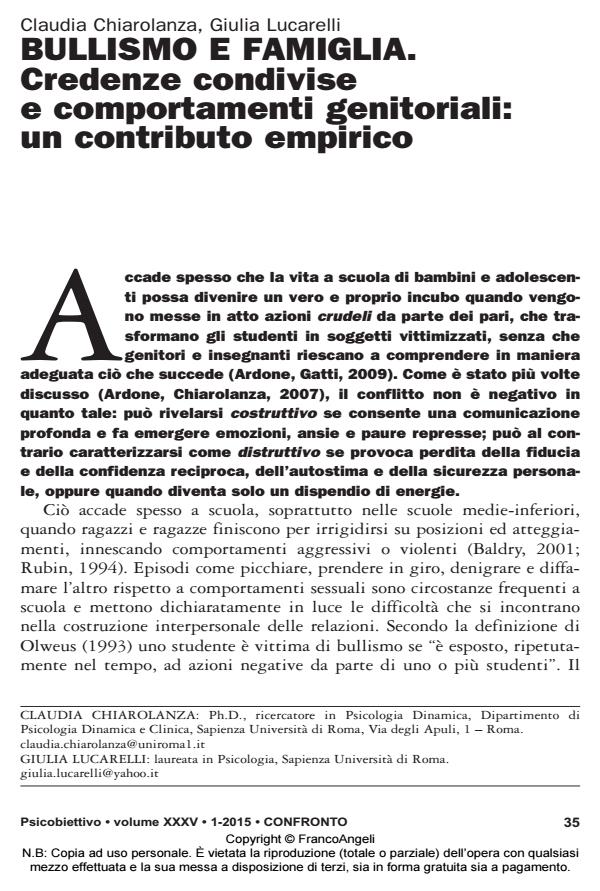Bullying and family. shared beliefs and parental behaviors: an empirical study
Journal title PSICOBIETTIVO
Author/s Claudia Chiarolanza, Giulia Lucarelli
Publishing Year 2015 Issue 2015/1
Language Italian Pages 22 P. 35-56 File size 185 KB
DOI 10.3280/PSOB2015-001003
DOI is like a bar code for intellectual property: to have more infomation
click here
Below, you can see the article first page
If you want to buy this article in PDF format, you can do it, following the instructions to buy download credits

FrancoAngeli is member of Publishers International Linking Association, Inc (PILA), a not-for-profit association which run the CrossRef service enabling links to and from online scholarly content.
With the objective to study the antecedents of risky behavior in adolescents, the author examined the influence of parental risk beliefs on the development of adolescents risk’s beliefs. The study involved 41 families with adolescent between the ages of 14-17 years old. In particular, the specific objective was to: a) explore the presence of discrepancy between parents and adolescents; b) study the influence’s relationship between parent risk’s beliefs and adolescents’ risk’s beliefs; c) study the effect of variables such as opening, stress, control, referring which are all referred to the construct of parental monitoring, in such relationship. Results showed that parent risk’s beliefs significantly influence adolescent risk’s beliefs, but this influence is totally mediated from the adolescents’ perceptions of their parents’ beliefs. Among the variables referred to the construct of parental monitoring, only "control" seems to influence significantly adolescent risk’s beliefs. In particular, this variable exerts a total mediator effect in the relationship between adolescents’ risk’s beliefs and adolescents’ perceptions of their parents’ risk’s beliefs. In general, results support the current literature in emphasizing parental framework, as highly influencing the adaptive or maladaptive result of adolescent behavior.
Keywords: Adolescents; Family; Shared Beliefs; Risk Behaviors; Parental Monitoring; Parental Control.
Claudia Chiarolanza, Giulia Lucarelli, Bullismo e famiglia.Credenze condivise e comportamenti genitoriali: un contributo empirico in "PSICOBIETTIVO" 1/2015, pp 35-56, DOI: 10.3280/PSOB2015-001003